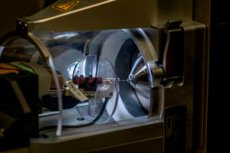New publications
Artificial intelligence model detects signs of cancer at an ultra-fast rate
Last reviewed: 02.07.2025

All iLive content is medically reviewed or fact checked to ensure as much factual accuracy as possible.
We have strict sourcing guidelines and only link to reputable media sites, academic research institutions and, whenever possible, medically peer reviewed studies. Note that the numbers in parentheses ([1], [2], etc.) are clickable links to these studies.
If you feel that any of our content is inaccurate, out-of-date, or otherwise questionable, please select it and press Ctrl + Enter.

Researchers at the University of Gothenburg have developed an AI model that improves the potential for cancer detection through sugar analysis. This AI model is faster and better at finding abnormalities than the current semi-automated method.
Glycans, the structures of sugar molecules in our cells, can be measured using mass spectrometry. These structures can indicate various forms of cancer in cells. However, the data from the mass spectrometer must be carefully analyzed by humans to determine the structure from the glycan fragmentation. This process can take hours to days for each sample and can only be done with high accuracy by a small number of experts in the world, as it is essentially detective work learned over many years.
Automation of detective work
This process is a bottleneck in the use of glycan analysis, for example for cancer detection, where many samples need to be analyzed. Researchers from the University of Gothenburg have developed an AI model to automate this work. The AI model, called Candycrunch, solves the task in just a few seconds per test. The results were published in a scientific paper in the journal Nature Methods.
The AI model was trained using a database of more than 500,000 examples of different fragmentations and associated structures of sugar molecules.
New biomarkers
This means that the AI model could soon achieve the same level of accuracy as sequencing other biological sequences, such as DNA, RNA, or proteins. With its speed and accuracy, the model could accelerate the discovery of glycan biomarkers for cancer diagnosis and prognosis.
"We believe that glycan analysis will become a more significant part of biological and clinical research now that we have automated the bottleneck," says Daniel Boyar, associate professor of bioinformatics at the University of Gothenburg.
The Candycrunch model is also able to identify structures that are often missed by manual analysis due to their low concentrations. Thus, the model can help researchers find new glycan biomarkers.
